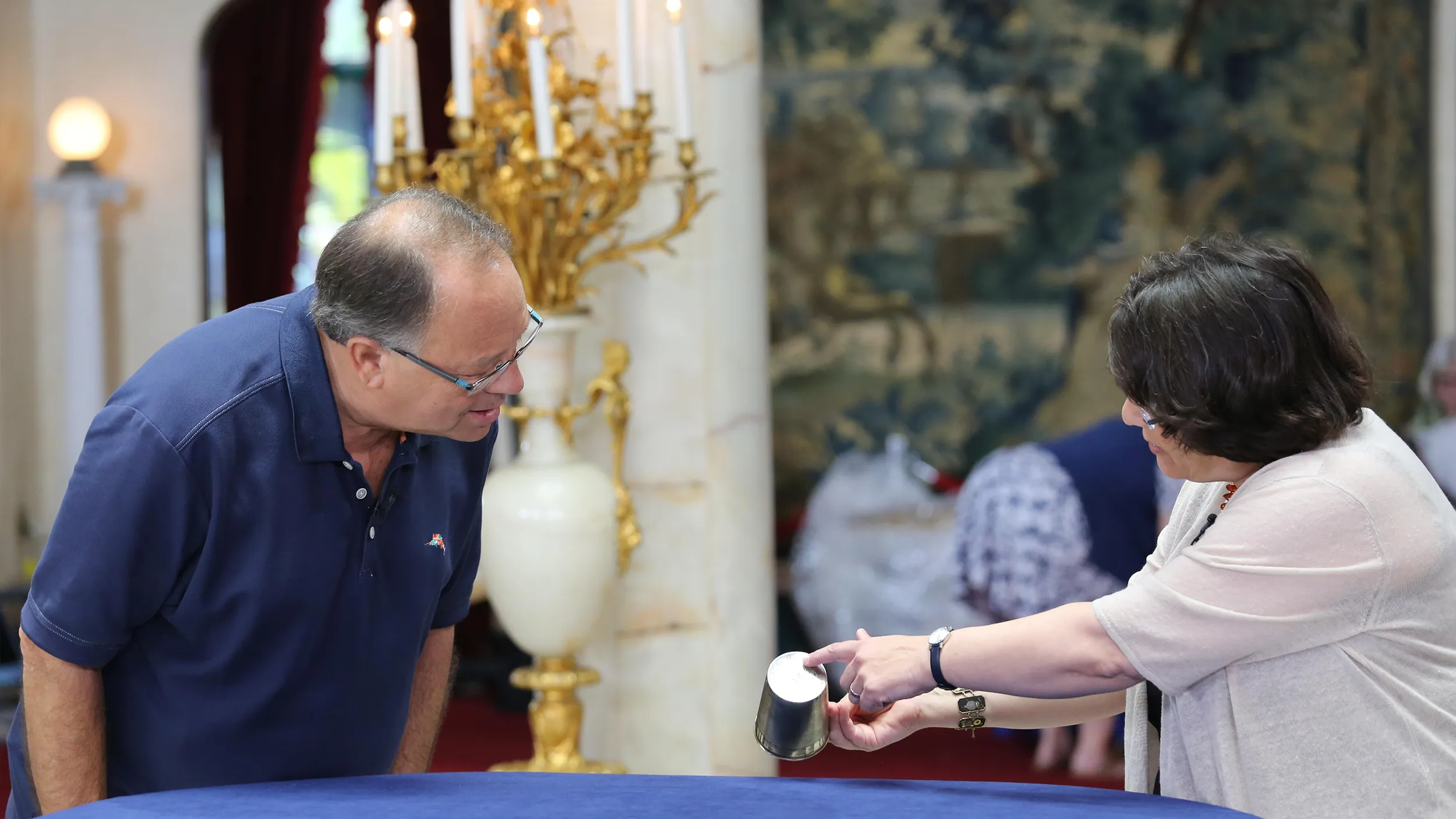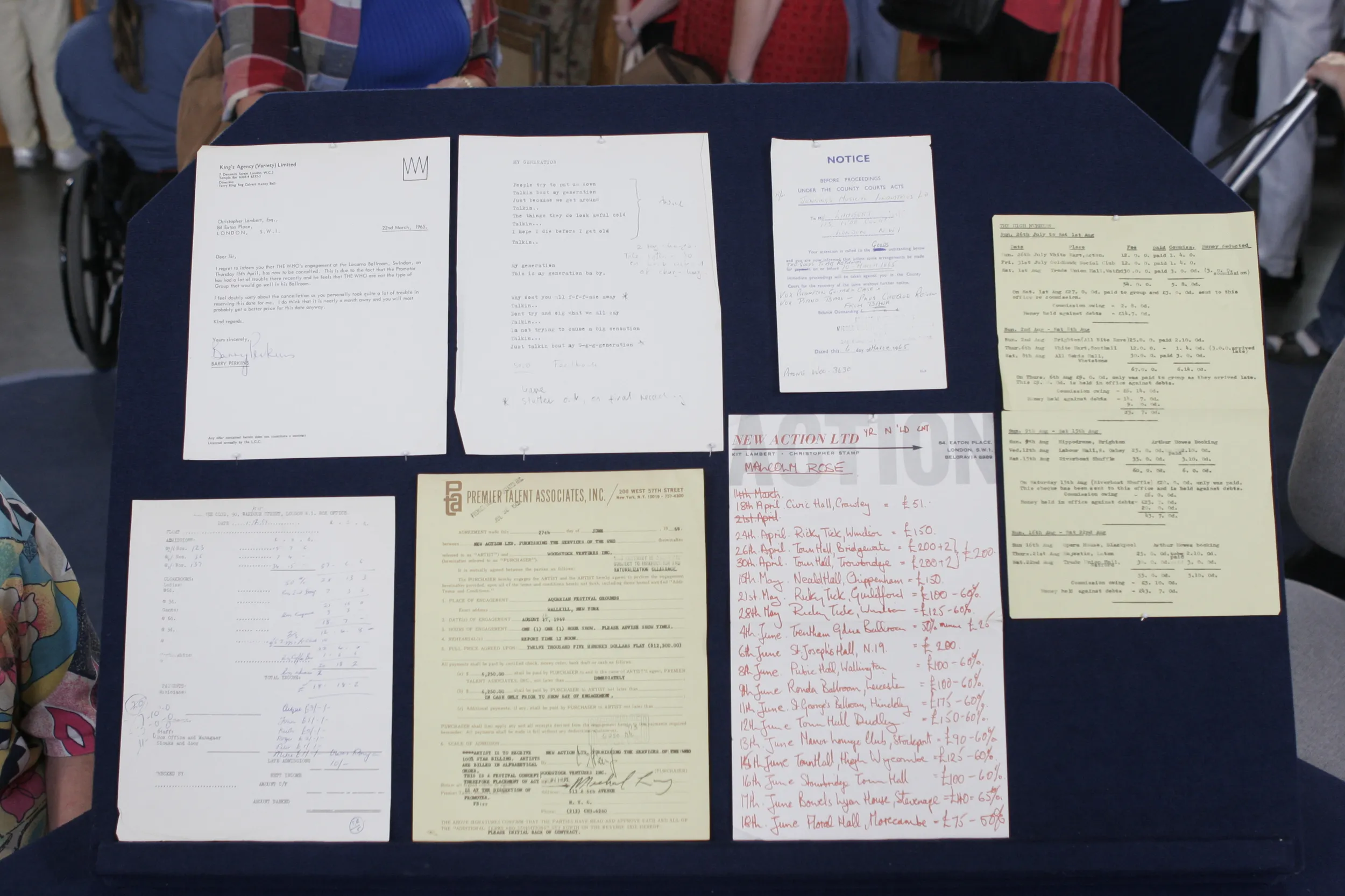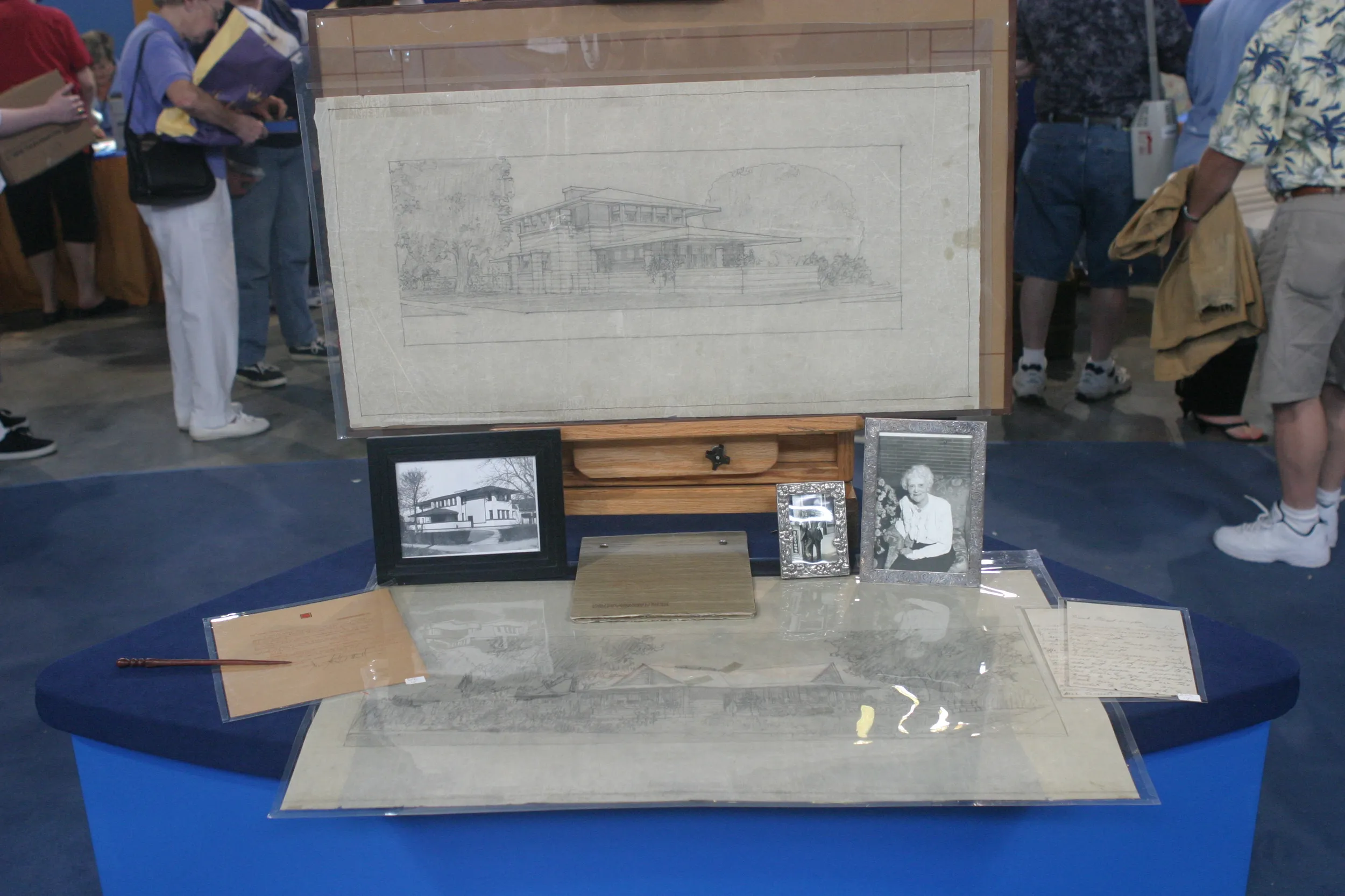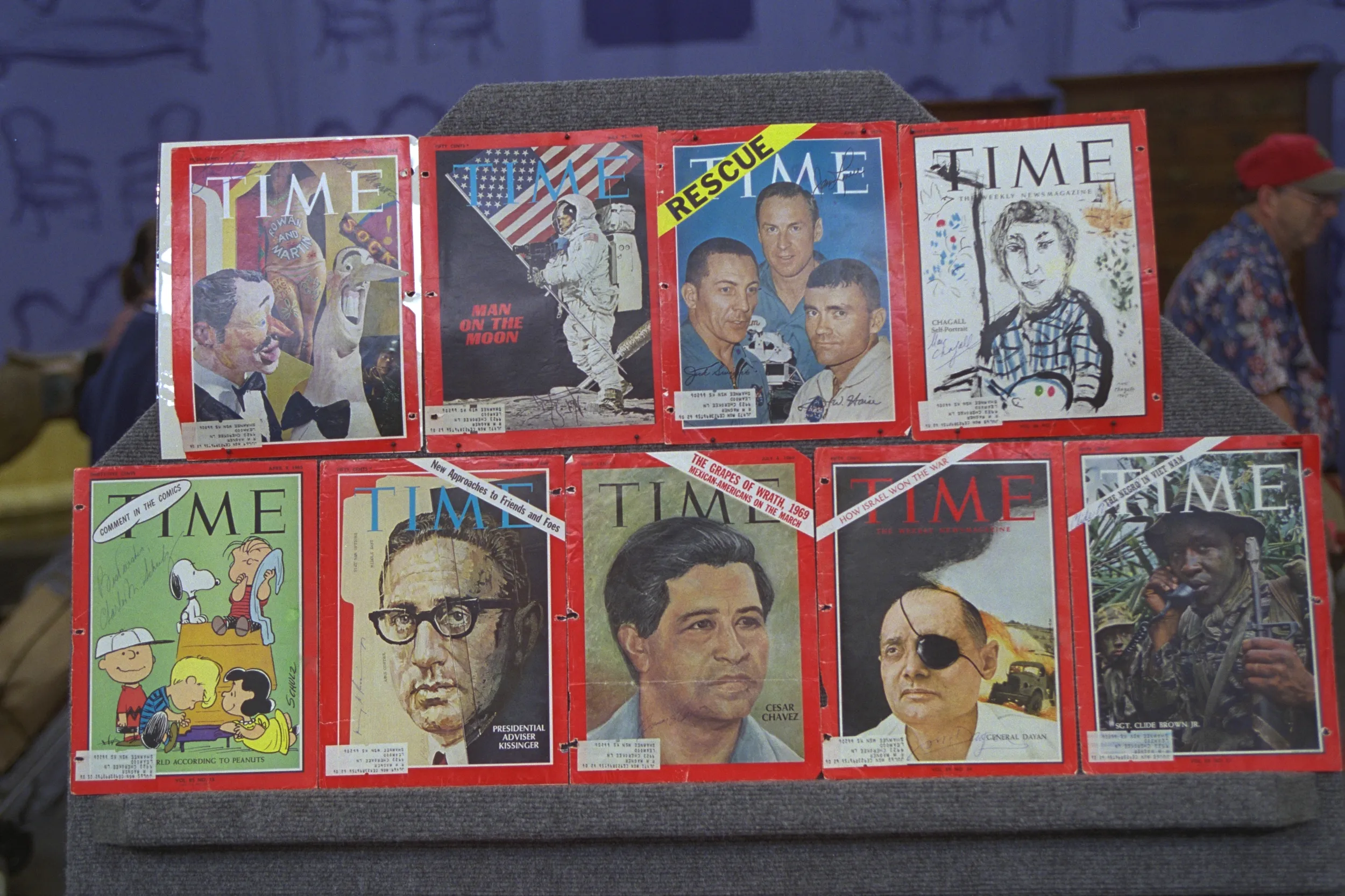GUEST: Well, my great-great-grandfather was a whaler, and so, some of these were for me. I had the, all the scrimshaw, and my cousin had all the journals. And he gave the journals to me, so it would be a complete set. So that's why I, I just acquired the journals within the last couple of years. So, it's all together now.
APPRAISER: Have you read the journals?
GUEST: I've read a little bit. Two of them are very old, they scared me a little bit to open them, because they were so fragile.
APPRAISER: Well, I'm happy you brought them in. They're a lot of fun. We actually have three journals here, and a tooth. They are whaling. I'll say the one closest to you, actually, it wasn't as much a whaling trip, at least from what I could read of it, as he was bringing supplies out to California in 1849.
GUEST: Yes, right.
APPRAISER: And of course...
GUEST: The Gold Rush.
APPRAISER: 1849 is an important time in the Gold Rush.
GUEST: Yeah, yeah.
APPRAISER: And when you start reading through some of the pages, most of it is what the weather's like, and that is very typical. The other two, on this side, closer to me, are whaling journals. Now, the first one we have is out of New Bedford, and it's from 1846. And it's describing going out and getting whales, which is what a lot of these images are. And as you read through a journal like this, when you see the images of the whales, the whale tails, that's telling you that they were successful. And it was an incredibly dangerous business. A lot of people romanticize it. But going out in a small boat and trying to kill and capture a whale was dangerous. It's a great journal, and it gives a good accounting, and they were very successful. So he must, must have been a good captain. Now, the one that I particularly liked was this journal on the Amazon. It starts in 1839, and this one goes even into the 1840s. But what really makes this one interesting, and sort of way above the others is, he was going to Australia.
GUEST: Yeah.
APPRAISER: And 1840s, 1830s, for Australia, is actually pretty early. And there are a lot of very, very avid collectors of any early material on Australia. So, one, you have a nice journal going to California, one, New Bedford, those show up. But then you have the Australia one, and you have the scrimshaw, that just sort of united everything.
GUEST: Yes.
APPRAISER: And one of the nice things about why we wanted to show this tooth is, this tooth is in the 1830s, 1840s, so it fits in perfectly with the journals. Also, it's a nice tooth, but not terribly beautifully done. My colleague said that the whale's tooth is probably around $500, somewhere in that range.
GUEST: Mm-hmm.
APPRAISER: The journal of going out to California is probably in the $500 to $1,000 range.
GUEST: Okay.
APPRAISER: The journal from New Bedford is probably in the $1,000 to $2,000 range.
GUEST: Mm-hmm.
APPRAISER: But, the special one is Australia. I would say, conservatively, and this is all retail value, conservatively, it's in the $5,000 to $10,000 range.









